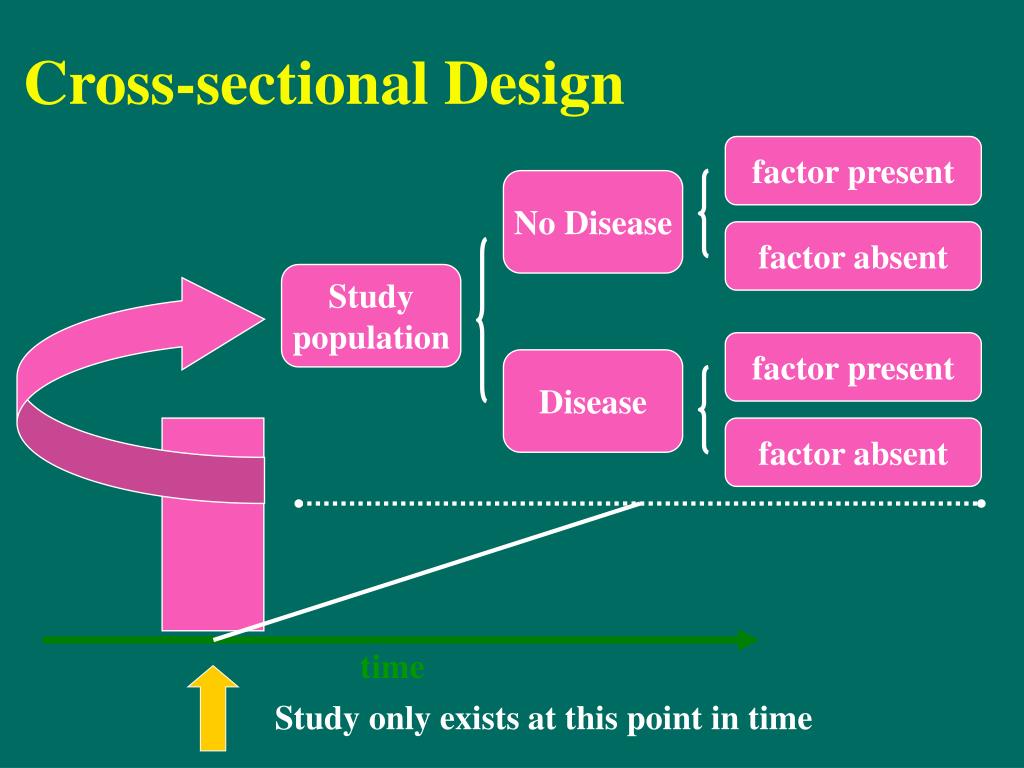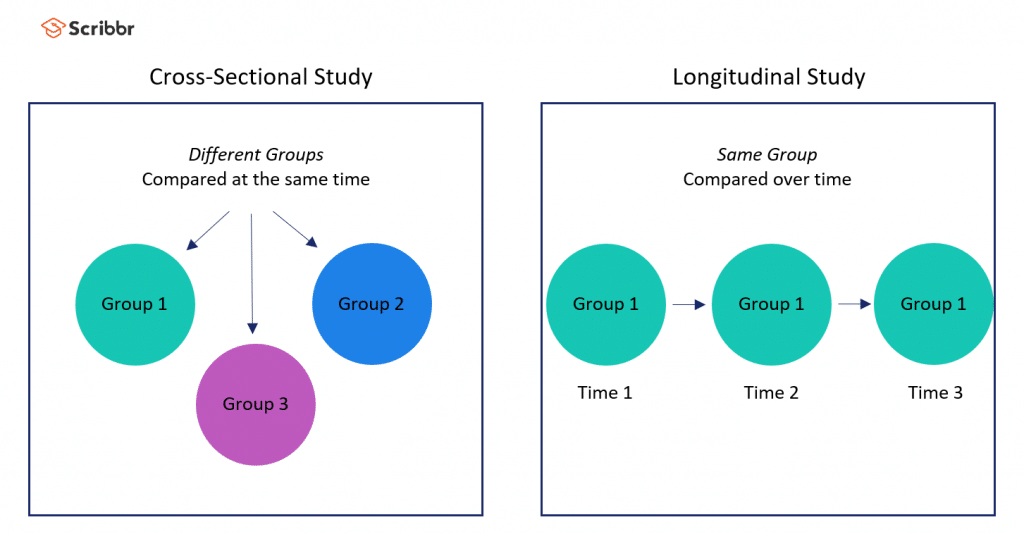Table Of Content

If you want to choose the variables in your study and analyse your data on an individual level, you can collect your own data using research methods such as surveys. The PR measures the prevalence of an outcome in the exposed group, divided by the unexposed group, and measures the association’s strength between the exposure and outcome (Alexander, 2015). Excess prevalence (EP) or the risk difference (RD) provides the difference in prevalence between the groups and indicates how much additional prevalence is due to the exposure of interest (Alexander, 2015b). The results might conclude that obesity among the HIV participants was twice (2.07) as common and occurred almost 12% more often among HIV participants who were sedentary. The authors would first like to express their sincere gratitude to all the respondents who voluntarily participated in the study.
Cross-sectional vs longitudinal studies
The simulation design seemed to induce learners to flow into the simulation, which increased their simulation educational satisfaction because they performed well once they engaged in the simulation activity. The results of assessing the mediating effect of flow on the relationship between simulation design and simulation educational satisfaction of the participants were as follows (Table 4; Fig. 1). As a result of checking for multicollinearity among the independent variables to verify the assumptions for the regression analysis, the tolerance was 0.70, and the variance expansion factor was 1.43, indicating no multicollinearity. As a result of checking the autocorrelation of the dependent variable, the Durbin-Watson value was 2.06, which was close to 2, indicating that they were independent of each other. As nurses fulfill an essential role among healthcare workers, they experienced a particularly high occupational burden during the peak of coronavirus disease (COVID-19) pandemic [13]. In a multi-center cross-sectional online survey, among 395 healthcare workers, there were 42.28% and 56.2% were found to have depression, and anxiety during the COVID-19 pandemic, respectively [14].
Characteristics of cross-sectional studies

In the present study, the respondents who had at least one child were less likely to choose a smoke-free common area policy than those who had no child. This lower preference for smoke-free common area policies could be explained by the fact that introducing a smoke-free common area policy would encourage smokers to smoke at home. When their parents and other family members smoke at home, they are at higher risk of SHS exposure. This study used a cross-sectional design, which can only capture the associations between variables at one point in time. Other observational studies are needed to clarify the relationships between variables. Therefore, understanding the causality of the relationships between variables requires further studies.
The mediating effect of flow on the relationship between simulation design and simulation educational satisfaction
In a cross-sectional study, the investigator measures the outcome and the exposures in the study participants at the same time. Once the participants have been selected for the study, the investigator follows the study to assess the exposure and the outcomes. Cross-sectional designs are used for population-based surveys and to assess the prevalence of diseases in clinic-based samples. They may be conducted either before planning a cohort study or a baseline in a cohort study. These types of designs will give us information about the prevalence of outcomes or exposures; this information will be useful for designing the cohort study.
The higher support for smoke-free building policies among those with smoking family members could be attributed to their concerns about the potential health problems of their family members due to smoking and SHS exposure. For data collection, we recruited a total of 18 experienced social science graduates and provided them with 2-day training on the objectives and methodology of the study, the survey questionnaire, and the data collection procedure. We formed six teams with these trained individuals before data collection; each team consisted of one male data collector, one female data collector, and one field supervisor. A semi-structured survey questionnaire, originally developed in English, was forward-translated into the local language Bengali and back-translated into English. Following the training, the Bengali version questionnaire was pretested among 25 respondents in similar study settings to determine its clarity, practicality, and relevance to the study participants.
Statistical analysis
The list included 1067 MUH complexes from Dhaka City, 210 from Chattogram City, 120 from Rajshahi City, 95 from Khulna City, 90 from Sylhet City, 80 from Barishal City, and 105 from Rangpur City. In the second stage, we randomly selected 60 complexes from Dhaka City and 20 complexes from each of the six cities, considering an average of three to five respondents from each MUH complex. There was an exception for two-unit complexes where at least two residents were recruited per complex. The final stage involved selecting MUH residents at the household level using a convenience sampling technique. Thus, we interviewed a total of 616 MUH residents, including 214 from Dhaka City and 67 from each of the six cities.
Contents
The Korean Accreditation Board of Nursing Education also allows simulation-based education to replace four credits of clinical practice credits in the third phase and up to six credits in the fourth phase [3]. A cross-sectional study will include several variables and sample groups, meaning it will collect data for all the different sample groups at once. However, in longitudinal studies, the same groups with similar variables can be observed repeatedly.
What is a Cross-Sectional Study?
Sometimes only cross-sectional data are available for analysis; other times your research question may only require a cross-sectional study to answer it. Prominent examples include the censuses of several countries like the US or France, which survey a cross-sectional snapshot of the country’s residents on important measures. International organisations like the World Health Organization or the World Bank also provide access to cross-sectional datasets on their websites. You then decide to design a longitudinal study to further examine this link in younger patients. Without first conducting the cross-sectional study, you would not have known to focus on younger patients in particular. Epidemiology is the study of the distribution and determinants of health-related states or events in specified populations, and the application of this study to the control of health problems (1).
Factors associated with sexual dysfunction in patients with colorectal cancer in Iran: a cross-sectional study Scientific ... - Nature.com
Factors associated with sexual dysfunction in patients with colorectal cancer in Iran: a cross-sectional study Scientific ....
Posted: Wed, 28 Feb 2024 08:00:00 GMT [source]
Participants
To implement a cross-sectional study, you can rely on data assembled by another source or collect your own. There are several actions that could trigger this block including submitting a certain word or phrase, a SQL command or malformed data. Similar to the OR interpretation, if the RR was equal to 1, exposure did not prevent or harm the exposed and unexposed groups. In other words, being obese did not affect the activity level (sedentary versus not sedentary).
In a previous study, only 47.5% responded that they were satisfied with their university life [8]. However, in this study, 76.9% were satisfied with their major and clinical practice, indicating that simulation educational satisfaction was higher than in the previous study. Furthermore, in this study, the more satisfied students were with their majors and clinical experiences, the higher their simulation educational satisfaction was, supporting this inference. When examining the mean ratings for each of the simulation educational satisfaction subfactors, the emotional response score was the lowest in both this study and the previous study [8]. This may have been because simulation-based education caused nursing students to feel nervous, anxious, or embarrassed [9, 26, 27].
While this study provides interesting insights, it is important to acknowledge its various limitations. First, since this study is cross-sectional, there is a concern for reverse causation, where mental health problems may contribute to increased BMI. Future studies with a longitudinal framework are warranted to address this issue.


No comments:
Post a Comment